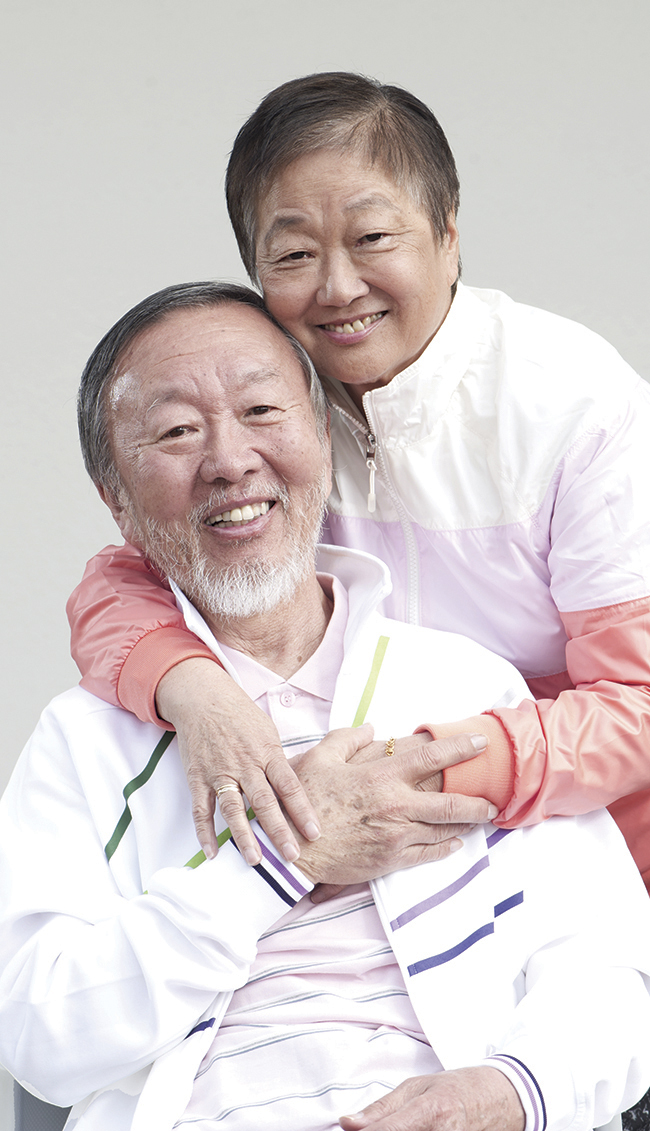Charles Kuen Kao
DOI: 10.1063/PT.3.4255
Charles Kuen “Charlie” Kao was a man who transcended the usual categories that we use to pigeonhole scientists and engineers. At home throughout the world and a citizen of both the US and the UK, he remained deeply rooted in Hong Kong, where he returned for extended periods throughout his life. A Catholic by choice, he remained attached to Chinese culture; his grandfather was a famous scholar and poet, and Charlie was a lover of Chinese novels and crafts. While maintaining friendships throughout the world, he was a devoted family man; he kept close ties with a widespread family and was married for 59 years to May-Wan “Gwen” Wong, who was his intellectual and personal partner.

Charles Kuen Kao
CHARLES K. KAO FOUNDATION FOR ALZHEIMER’S DISEASE

Considered introverted in his youth, Charlie became a charismatic scientific leader who repeatedly assembled teams of scientists and engineers to tackle problems of importance to society. He thought of himself as an engineer and focused on problems whose solutions would better the human condition, but in the process he made important contributions to fundamental science. He worked in academia, in industry, and with government.
Charlie was born on 4 November 1933 in Shanghai, China. His family moved to British Hong Kong in 1948, and he got his secondary education at St Joseph’s College. After graduating, he went to the UK, where he attended Woolwich Polytechnic (now the University of Greenwich) and obtained a bachelor of engineering degree in 1957. While working at Standard Telecommunication Laboratories (STL), he became interested in optical waveguides. He registered as an external student at University College London in 1963, and in 1965 he obtained his PhD under the supervision of Harold Barlow. Charlie’s dissertation was on millimeter and submillimeter electromagnetic waves in waveguides.
At STL, Charlie became part of a team that was exploring alternatives to existing telecommunications that used coaxial cables or radio signals and operated at megahertz frequencies. The researchers looked at hollow metal waveguides that could operate at gigahertz frequencies but ultimately rejected them. They then considered several optical waveguide designs in which the light would be mostly guided in air and thus avoid material losses. By 1965 Charlie was leading the STL team. He changed its focus to optical fibers, and in 1966 he and George Hockham, with Gwen’s assistance, wrote a seminal paper in which they concluded that eliminating glass impurities would reduce losses below 20 dB/km, the threshold for commercial viability. Charlie realized that a worldwide effort was needed to turn that theoretical possibility into a reality, so he crisscrossed the globe and mobilized numerous participants in that ultimately successful effort.
Later in his career, Charlie became an advocate for engineering research and education. Good engineering requires a profound understanding of basic physical science combined with an ability to assess the effects of the engineering outcomes on society. Charlie founded the department of electronics (later the department of electronic engineering), which exemplified those values, at the Chinese University of Hong Kong (CUHK). Between 1974 and 1986, he worked at ITT Corp in the US, first as chief scientist and ultimately as director of corporate research.
In 1986 Charlie returned to CUHK as vice chancellor. During his tenure, he propelled CUHK into the front ranks of world-class research universities and in the process raised the level of all research universities in Hong Kong. He assembled talented researchers and started several new engineering departments. Charlie recognized early the growing importance of biotechnology and the internet, and he started research programs in those areas. He was an early advocate of environmentally conscious engineering and in 1972 wrote a paper on the subject. The strong partnerships he brokered among academic, industrial, and government stakeholders became a model for research universities in Hong Kong and ultimately for Mainland China and other countries in Southeast Asia.
Charlie was an advocate for free speech. Famously, when a student protest disrupted an important meeting and he was asked how the students should be punished, he responded, “Punishment? Why do I need to punish them? They have the freedom to express their views.”
Beginning in 2004 Charlie developed Alzheimer’s disease. However, with help from Gwen (shown in the photo), he remained active. In 2009 he was a corecipient of the Nobel Prize in Physics for his work on fiber optics. He could no longer speak, but he appeared in Stockholm, with Gwen giving his acceptance speech. In 2010 he and Gwen set up a foundation to support people with Alzheimer’s and their caregivers. Charlie’s memoir, A Time and a Tide, was published in 2011. Charlie finally succumbed to the disease on 23 September 2018 while in hospice care in Hong Kong.
More about the Authors
Chao Lu. Hong Kong Polytechnic University, Kowloon.
Ping-Kong Alexander Wai. Hong Kong Polytechnic University, Kowloon.
